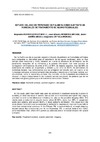Identificador persistente para citar o vincular este elemento:
https://accedacris.ulpgc.es/jspui/handle/10553/13513
| DC Field | Value | Language |
|---|---|---|
| dc.contributor.author | Borreguero Fabelo, Alejandro | en_US |
| dc.contributor.author | Herrera-Melián, JA | en_US |
| dc.contributor.author | Araña, J. | en_US |
| dc.contributor.author | Ortega Méndez, José Alejandro | en_US |
| dc.date.accessioned | 2015-06-09T02:30:16Z | - |
| dc.date.accessioned | 2018-06-15T09:20:46Z | - |
| dc.date.available | 2015-06-09T02:30:16Z | - |
| dc.date.available | 2018-06-15T09:20:46Z | - |
| dc.date.issued | 2015 | en_US |
| dc.identifier.isbn | 978-84-938046-4-0 | en_US |
| dc.identifier.uri | https://accedacris.ulpgc.es/handle/10553/13513 | - |
| dc.description.abstract | Se ha hecho uso de un sustrato orgánico (triturado de palmera) en humedales artificiales para comprobar su idoneidad para el tratamiento de las aguas residuales, tanto en flujo vertical como horizontal y mixto, teniendo en cuenta la eficiencia de eliminación de los parámetros recogidos en la normativa y la posible obturación. Con este sustrato se consiguieron eliminaciones de entre el 80 y el 90% de materia orgánica, más del 98% de eliminación de sólidos en suspensión y turbidez y en torno al 99.9% de eliminación de coliformes fecales. Las conclusiones que se extrajeron del estudio son, en cuanto a los humedales primarios, el funcionamiento más eficiente y robusto de un humedal vertical, aun obturándose, frente al horizontal y al mixto. Por otro lado, en los humedales secundarios se observó un mejor comportamiento del humedal vertical con picado de palmera que de los verticales con grava y picón y que del horizontal con sustrato mineral. | en_US |
| dc.description.abstract | In this study, palm tree mulch was used as substrate in treatment wetlands to prove its suitability to treat raw water in vertical flow as well as in horizontal and hybrid flow, paying attention not only to the elimination efficiency but also to the possible clogging effect. The results were a reduction in organic matter about 80-90%, more than 98% in suspended solids and turbidity and around 99.9% in fecal coliforms elimination. The result from this study shown the mulch used as substrate in wetlands for wastewater treatment is as valid or more than conventional substrate. In the Primary TW, a vertical wetland, although clogging, worked almost like a horizontal one. In the Secondary TW, a vertical wetland with mulch performed better than others with gravels as substrate and a horizontal wetland with gravel and sand. | en_US |
| dc.format | application/pdf | es |
| dc.language | spa | en_US |
| dc.publisher | Instituto Geológico y Minero de España | en_US |
| dc.publisher | Asociación Internacional de Hidrogeólogos | en_US |
| dc.rights | by-nc-nd | es |
| dc.source | Actas del II Workshop sobre estudio, aprovechamiento y gestión del agua en terrenos e islas volcánicas, 21, 22 y 23 de enero de 2015 (Gran Canaria, Islas Canarias) / M.C. Cabrera; T. Cruz-Fuentes; V. Mendoza-Grimón y M.P. Palacios-Díaz, p. 325-332 | en_US |
| dc.subject | 330810 Tecnología de aguas residuales | en_US |
| dc.subject.other | Humedal artificial | en_US |
| dc.subject.other | Sustrato orgánico | en_US |
| dc.subject.other | Obturación | en_US |
| dc.subject.other | Treatment wetland | en_US |
| dc.subject.other | Organic substrate | en_US |
| dc.subject.other | Clogging | en_US |
| dc.title | Estudio del uso de triturado de palmera como sustrato de humedales de tratamiento de aguas residuales | en_US |
| dc.type | info:eu-repo/semantics/conferenceObject | en_US |
| dc.type | ConferenceObject | en_US |
| dc.relation.conference | II Workshop sobre estudio, aprovechamiento y gestión del agua en terrenos e islas volcánicas | en_US |
| dc.identifier.absysnet | 706209 | - |
| dc.description.lastpage | 332 | en_US |
| dc.description.firstpage | 325 | en_US |
| dc.investigacion | Ciencias | en_US |
| dc.rights.accessrights | info:eu-repo/semantics/openAccess | es |
| dc.type2 | Actas de congresos | en_US |
| dc.description.numberofpages | 8 | en_US |
| dc.utils.revision | Sí | en_US |
| dc.identifier.ulpgc | Sí | en_US |
| dc.contributor.buulpgc | BU-BAS | en_US |
| item.fulltext | Con texto completo | - |
| item.grantfulltext | open | - |
| crisitem.event.eventsstartdate | 21-01-2015 | - |
| crisitem.event.eventsenddate | 23-01-2015 | - |
| crisitem.author.dept | GIR IUNAT: Fotocatálisis y espectroscopía para aplicaciones medioambientales. | - |
| crisitem.author.dept | IU de Estudios Ambientales y Recursos Naturales | - |
| crisitem.author.dept | Departamento de Química | - |
| crisitem.author.dept | GIR IUNAT: Fotocatálisis y espectroscopía para aplicaciones medioambientales. | - |
| crisitem.author.dept | IU de Estudios Ambientales y Recursos Naturales | - |
| crisitem.author.dept | Departamento de Química | - |
| crisitem.author.orcid | 0000-0002-2466-6531 | - |
| crisitem.author.orcid | 0000-0002-5551-029X | - |
| crisitem.author.orcid | 0000-0002-8276-5327 | - |
| crisitem.author.parentorg | IU de Estudios Ambientales y Recursos Naturales | - |
| crisitem.author.parentorg | IU de Estudios Ambientales y Recursos Naturales | - |
| crisitem.author.fullName | Herrera Melián, José Alberto | - |
| crisitem.author.fullName | Araña Mesa, Francisco Javier | - |
| crisitem.author.fullName | Ortega Méndez, José Alejandro | - |
| Appears in Collections: | Actas de congresos | |
Page view(s)
118
checked on Jun 15, 2024
Download(s)
839
checked on Jun 15, 2024
Google ScholarTM
Check
Altmetric
Share
Export metadata
Items in accedaCRIS are protected by copyright, with all rights reserved, unless otherwise indicated.
